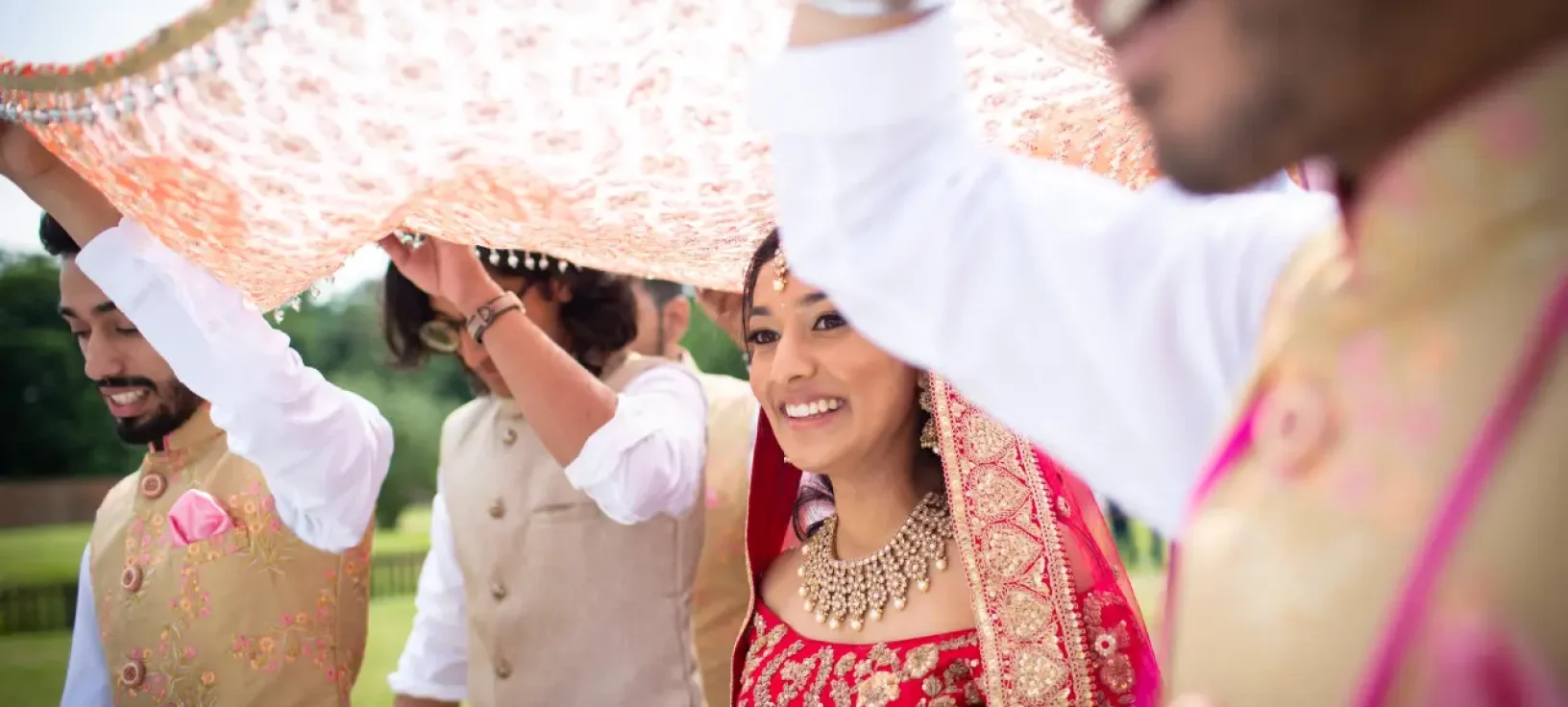After a long day photographing a wedding, the last thing you’d like for yourself as a wedding photographer is to stand at an editing computer and make changes to your photos. However, post-processing is a vital element of the wedding photography process. By editing your photos, you can fix imperfections, boost colors, and also add your style to every photo.
If you’re looking for a way to save time and still achieve stunning results, consider outsourcing to wedding photo editing services. These services can handle the meticulous editing work, allowing you to focus on capturing more beautiful moments.
Although processing images is a challenging and time-consuming task, following a few easy workflow tricks can help process large quantities of images and make the entire process easier and more efficient. To aid you in improving the post-processing process, we’ve put together this wedding photography workflow guide for post-processing to help you finish the editing process in no time!
What Is Post-Processing?
Post-processing is the act of manipulating and improving digital photos using specialized editing software. Common post-processing methods include straightening, cropping and color correction, adjustments to exposures, clone stamp editing, and incorporating graphics or text.
Although post-processing is a time-consuming task it is essential to create stunning photos. When you carefully alter your images in post-production you will be able to solve many of the issues that can arise during the photograph-taking process. For instance, if you’re not happy with the brightness of your photo after processing, you have the chance to correct it. If you’re also noticing undesirable objects in your photograph processing allows you to take them out.
A typical post-production workflow could involve importing your photos into a software application like Adobe Photoshop or Lightroom, making changes to the photos after which you export the edited images before uploading them to a gallery or website as well as printing them. Apart from giving you greater control over the result of your photos, Post-production allows you to let your imagination run wild. If you use the correct post-processing methods you can transform an ordinary image into an art piece.
Lightroom For Wedding Photographers
Lightroom is an incredibly powerful photo editing program that has everything you need to make stunning photos. From basic color corrections to advanced editing the software comes with all the tools needed to ensure that your photos appear the best they can. Additionally, Lightroom’s non-destructive editing feature means that you can make modifications to your photos without affecting the original image files.
This is vital for photographers of weddings as it lets you play with various styles without worrying about losing the original image. It also provides a more seamless workflow for editing huge quantities of photos. Thanks to its smart previews function it allows you to edit photos even when you’re offline!
Lightroom Workflow For Wedding Photographers
1. Save & Back-Up RAW Files
The initial step in the post-processing workflow for wedding photography is to back up and save up your RAW file. If you are a wedding photographer, you must always back up your images. If something happens to your original files, it would be catastrophic for your reputation and business.
There are several options to backup images, for example, cloud storage, an external drive, or a USB drive. It is The next thing to do: separate the images into folders based on the timeline of your wedding or client folder. This will allow you to quickly find the photos you require while editing. The names of your folders should be based on the kind of images they have to make it easier for you to identify the folder while searching to find specific pictures.
2. Import Photos Into Lightroom
It is the next stage to add RAW images to Lightroom. To accomplish this, head to the File menu, and then select “Import Photos and Video”. From there, you’ll have the option to select where your images are and the way you’d like to import them.
If you have lots of images to import, you’ll want to choose the “Copy as DNG” instead “Copy as DNG” option. This will transform your RAW images to the Lightroom-compatible DNG format, and store them in an individual folder. After you’ve chosen the images you’d like to import select the “Import” button. If you’re uploading photos stored on storage media, you’ll be offered the option of removing the photos from the memory card once they’ve been transferred. This is always the best option as it frees storage space in your memory card.
3. Culling
Culling is the procedure of deciding and grading the top photographs of the photography. This is a long-winded job, but it’s vital to create a coherent final product. When you are grading your photos be sure to look out for duplicates, blurred photos, or poor composition. After you’ve picked the top images, remove the remainder. It is essential to be selective when you’re culling because it will help you save time during the editing process. After you have selected the top images, copy the culled photos into a different folder and then create a brand new catalog in Lightroom. Sort your photos in chronological order, and then begin editing.
4. Batch Processing
Batch processing is a fantastic method to speed up editing large amounts of photos. This method allows you to apply the same editing to multiple photos at a time. To batch-process, pick the photos you wish to edit, and then go to”the “Develop Module”. Then, you can perform all of the necessary changes to a single photo. When you are satisfied with your results, press”Sync” or click the “Sync” button. The same changes to all the photos you’ve selected. Applying the same editing to multiple photos at once will save you much time in the editing workflow.
5. Advanced Editing
After you have completed the basic edits, go on to the next stage – advanced editing. Lightroom allows you to transfer photos to Photoshop to edit. All you need to do is pick the image you wish to edit, then click “Edit In” and then “Edit In Photoshop”. You can eliminate unneeded objects, and blemishes, make borders, and apply text and textures! After you’ve completed your final editing, click the Files tab, then Save, and Lightroom will sync itself and display all the edited images.
6. Export Photos
The next step of your post-production workflow will be the need to export your images from Lightroom. To do this, simply go to”File”, then click on the “File” menu and select “Export”. From there, you can select the location you’d like to save the exported files. It is best to save your images in high-resolution so you have a top-quality version that you can offer your clients. You may also opt to export your photos in various sizes, including prints and social media formats. After you’ve selected the size then click the “Export” button.
7. Optimize File Size
Once you’ve got the high-resolution images exported The next step in the process of post-processing your photos is to make them more optimized to be suitable for web usage. This will ensure that your images load fast on your website or blog. There are a variety of methods to accomplish that, though the simplest is to install a plugin in Lightroom. We suggest that you use ImageOptim, the ImageOptim plugin because it is seamlessly integrated with Lightroom and delivers outstanding results.
8. Create Online Gallery
Once you’ve got your photos altered to be exported, optimized, and edited The next step is to make your online galleries. There are a variety of platforms that can be used for this purpose, however, we suggest choosing Extra. Extra is a beautiful and simple-to-use gallery that is ideal for displaying your work. They also provide a range of plans that will meet your requirements and budget. Making your online galleries is an excellent method of sharing your images with family, clients, and even your friends. It’s also a great method to share high-quality files.
9. Deliver Your Work
The final step of the post-processing workflow for wedding photography is to present your stunning visual work to the clients! It can be accomplished by a variety of methods like sending digital files to email or creating prints. If you’re planning to send the digital file, we suggest sending them through services like Dropbox and WeTransfer. These services enable you to send large files without any difficulties. If you’re printing then we suggest hiring a printing service that can provide top-quality prints.
Bonus Tip: Seek Help From OutsourceThePhotoEdit
If you’re looking to cut even more time during the wedding photography post-processing workflow outsourcing your editing of photos to OutsourceThePhotoEdit. OutsourceThePhotoEdit is a fast and personalized photo editing service that can help you edit your images quickly, consistently, and with a personalized touch. Affirmed by a lot of wedding photographers from all over the world We’re committed to providing our clients with the best quality and our solutions are created specifically for wedding photographers who are professionals.
At OutsourceThePhotoEdit we are passionate about helping you grow your wedding photography business. One of the ways we accomplish this is to reduce your post-production workload using our expert editing and editing services. To find out more about the ways we can assist with your business wedding photography, look into our price plans.
Also read this: Sunday Blessings Images | Free Sunday Morning Blessings





